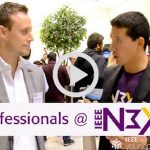Small Business Innovation Research (SBIR) | Non-Dilutive Funding for Your Company
What if I told you there is a funding opportunity in the US that is restricted to small companies, focuses on technology, and takes no equity (non-dilutive), debt stake (grant or contract, not a loan), or claim on Intellectual Property (IP) for what may be a seven-figure investment? The SBIR – Small Business Innovation Research – program has been operating since 1982, providing funding totaling over $2 billion per year, and giving early starting capital to companies that grow from there, including the likes of Symantec, Qualcomm, Intuitive Surgical, and Illumina.
History
The SBIR program came into law in 1982, founded by Roland Tibbetts, whose goal was to fund innovation that supports American companies and give them the support to take ideas to a stage where other private investors can take over. It was last renewed as part of the 2017 National Defense Authorization Act and is currently authorized to September 2022.
All federal agencies with a large R&D budget are required to set aside part of that budget (3.2%) exclusively for small businesses with 500 or fewer employees, that are majority-owned by Americans and permanent residents. Eleven agencies administer SBIRs – the Department of Defense (DoD) and National Institutes of Health (NIH) are by far the largest and account for nearly 70% of the approximate $2.5 billion of funding. The Department of Energy (DoE), National Science Foundation (NSF), and NASA provide under 10% each and the remainder is split between the other 6 agencies. Application processes vary between agencies, but there are common factors between them.
The Small Business Technology Transfer (STTR) is a sister program to SBIR. It is similar, but requires the participation of an academic partner and is restricted to a smaller number of agencies, with a smaller set-aside. Aside from these differences, the broad strokes of SBIR also apply to STTR.
SBIR Phases
Most SBIRs start with an application for a Phase I – often a proof of concept – that is expected to take between 6 and 12 months, with funding for $100,000 to $400,000 (depending upon agency and project area.) Applications usually take the form of a 6 to 12-page technical proposal, a project plan, a commercialization plan, a single page budget, personnel biographies, letters of support, and other relevant information. The proposal is reviewed by a committee and typically awardees are notified and funded within 4 to 6 months. By the end of Phase I, the company has ideally demonstrated a proof of concept and its competency to take the project further.
Phase II is a more substantial effort with greater budgets – up to around 3 years and $2,000,000 (again, depending on agency and topic). Usually, an agency invites a company to apply for Phase II after a successful Phase I. There are some Fast-track and “Direct to Phase II” options, but they are unusual. The application is usually much more detailed; budget and timelines come under more intense scrutiny. Therefore, it is recommended for more seasoned applicants. By the end of Phase II, a successful project is usually expected to have something between a working prototype and a commercial product.
Phase III is the commercialization phase and receives no specific SBIR funds, though some agencies do have matching and follow-up funding. Agencies with very specific needs often try to ensure valuable technologies make it to market, such as the DoD connecting small businesses with primes like Boeing.
With a few months between Phase I and II, it can take as much as 5 years to get from application to the end of a successful Phase II – these are not small projects or commitments!
Application Process
Companies applying for SBIRs need to follow a few administrative basics – the first is setting up a for-profit company (e.g. an LLC, C-corp, etc) in the US, with >50% ownership by US citizens or permanent residents, and obtaining an Employer Identification Number (EIN) from the IRS. The company should then apply to Dun and Bradstreet for a DUNS – a unique identifying number. (They may try to sell you other services. Just keep telling them you need it for a federal grant application and you get it for free.) The next step is registering with the System for Award Management (SAM), in order to apply for government contracts. As you can see, all this takes some time and effort and can take a couple of weeks to complete. The SBIR.gov site has a walkthrough to help here.
Each agency has a specific application site. NSF uses Fastlane, the NIH uses eRA Commons, the DoD uses DSIP, etc. Each site has its registration requirements for the company and potentially the key investigation staff, that also may take a few days to set up. I usually tell applying companies to allow a month before submission to get this process completely done the first time. Subsequent applications are then much faster.
Each agency, like the DoD, NIH, NSF, DoE, and NASA, maintains their own SBIR websites, while there is also an overall SBIR site, where more details on submission can be found.
Every proposal has key staff and a Principal Investigator (PI) who must work at least 50% of their time at the company. Proposed budgets may cover items such as salary for key staff, consultants, equipment, materials, justifiable travel, and reasonable overhead costs. The majority of the budget must be spent within the company (not outsourced), and any outsourced work should be done within the USA.
Agency Specifics
As mentioned, each agency administers the SBIR in its own way. The DoD has very targeted needs and this is reflected in its methodology. Twice a year the DoD SBIR topics are opened up and each branch has several targeted topics. (For example, the Navy may call for the development of a more compact and higher performing SONAR buoy.) The application deadline is about 2 months after the topic release, after which the topic is gone.
The NSF has a different approach, with 4 deadlines a year and where a submission on any topic within its remit is encouraged. Companies can pre-submit a short description to the NSF and receive feedback on whether an application is warranted or not.
The NIH has a mix, with 3 submission dates per year for most applications, and similar to the NSF, the submissions can be anything within its broad remit. Applicants are usually encouraged to speak to the SBIR manager in that area to gauge general response, and as a courtesy, to let the NIH staff review. The NIH also has called on specific topics that run for a limited period (for example, one to two years), on areas of particular need. Dates on some topics may vary slightly.
How Agencies Benefit
What do the agencies get for this money? First of all, they don’t get equity in your company. They don’t get paid back. They don’t own any product or IP that is created and provided you label everything sent to them in reports, they don’t own data rights either.
They do get research and products in areas critical to them. The products may not sell or the research may show an approach is not viable, but it is understood that there is risk involved. You owe them the reports, milestones, and deliverables listed in the proposal. Even then, if the ongoing research shows a pivot is needed, every monitor I have been involved with has been very reasonable about changing courses.
In most cases, the project monitors have spent their career in these fields and care deeply about curing disease, advancing technology areas, or helping those in the military (or whatever their area) get the best equipment and tools. They aren’t in this for personal reward and they want you to commercially succeed, because it means more and better products in their key areas. In my personal experience, almost every government agency representative is an exceptional advocate for their field and works hard to get positive outcomes for the company, the agency, and the country.
The other side of this is that the funding for SBIRs comes from an overall pot, not from an individual group’s budget. Getting awards in their area effectively increases their departmental budget, and your success benefits them in multiple ways. They “want” you to be the next Qualcomm.
This is one of the few times you will have a counterparty who doesn’t care solely about the bottom line.
The Downsides
So far it seems easy – if you write a few pages and join some websites, you get up to $2.4 million. These awards are competitive – many others are applying and your application is only one of many other worthy contenders. The success rate for NIH Phase I averages around 15 to 20%. Phase II averages around 30 to 40%, and there is no guarantee you will be in that pool. An excellent idea with a top-notch team and a well-written proposal will put you above that average, but you are unlikely to be there on your first application. When I work with companies writing SBIRs, I advise them to consider them for the long term, and that several attempts will be needed before they succeed.
As with anything new, the first proposal you write will take some time. Just the administrative preparation can take a few weeks, as you will need to work with various websites to develop company boilerplate sections, key member bios, and learn budgeting methods. You’ll also need to write compelling research and commercialization plans. Companies should expect to invest about 6 full weeks into writing their first SBIR proposal (apart from the administrative setup), 2 weeks for the next proposal, and a week for every subsequent one after that. As the business-minded among you are calculating, it does not make sense to have one of your most important staff members spend 6 weeks for a 20% chance of $150k – but if you are in for the long haul and assume this is going to continue over years, then it quickly shifts to being worthwhile. Over time, you will learn not only how to write SBIRs, but when to apply and the ones with which you should apply. Ultimately, you can get to the point where a few days work on a well-targeted application gets you a >50% chance of success.
After receiving the award, you are subject to Federal Acquisition Regulations (FAR), which require careful financial tracking and reporting, and limits how you can spend your funding. It is not a pot of money that can be used any way you want. However, a well-run company with good accounting should have no problems meeting FAR.
While the federal government will always pay, it can take time for federal payments to arrive or for contracts to be renewed. This can leave periods where your company is left without income, but still has employees. While agencies try to minimize this, it is a concern. If possible, try to maintain sufficient revenue or cash in your company to pay staff during these uncertain times.
The Upsides
There are several upsides beyond “up to $2.4 million of non-dilutive funding.” The agency is a customer, giving you input and feedback as you develop, and may ultimately be a source of revenue. This third party endorsement proves to others your idea and team has merit, and if you are raising money from other sources, it helps validate you.
Even if not initially successful, the process of creating the research and commercialization plans often focuses a company on where they are and where they need to go. Often times, this is the first formal plan a company has laid out for its technology and business. Further, the reviews returned can be eye-opening as to what other experts feel are the strengths and weaknesses of the company’s approach, and can direct future improvements. Of course, there’s always the chance that “Reviewer 2” is simply an idiot who doesn’t appreciate the genius, but that’s been grant applications throughout history!
One often overlooked benefit of the competitiveness of SBIRs is that if you have won one in a particular field, you have now met the competitive requirement in any such federal contract. So, it can be a rapid way to beat your competition to the punch.
Writing a Successful Application
Beyond having an excellent idea and a great team that meets the need of a federal agency, how do you write a good application? When writing my own, the first thing I think is that I’m not writing a report, I’m telling a story. I’m leading a reviewer on a journey, so by the end, they know this proposal needs to be funded. I start with a title that combines an obvious and important problem with a solution. It catches the eye and makes them want to read the first paragraph. The first paragraph conveys the core of the proposal and makes them want to read the rest of the first page. Then I have the rest of the first page to make it obvious that this is the solution that is needed. That first page is critical. The rest only shows that you have the background and team to make this work and that they should have no reason to doubt you. Have people you trust outside your company read your first page, and find out what excites them and why. Build that feedback into the next draft.
Keep the proposal simple and targeted. A straightforward application that picks one clear goal is easier to explain, but more importantly, it does not give “targets” for reviewers to pick on and make negative comments. Remember that when you are up against other good applications, one small criticism may cause the agency review panel to pick another awardee over you.
Lastly, remember these are reviewed by experts who are volunteers. They have day jobs and this is usually done at midnight after a long day of work. Make it easy for them to read. Use large font, short paragraphs, lots of figures, and bullet-pointed lists, so they don’t have to work to understand your genius. Remember, nobody likes opening a document to see ten pages of nine-point font!
Summary
The SBIR program is a great way of accessing millions of dollars of non-dilutive funding, feedback from experts, and gaining a prospective customer. It involves a lot of upfront work and discipline, but a consistent approach can yield a significant benefit to your company.
Paul Reynolds, Ph.D., is a Public Policy Liaison on the 2020 IEEE Entrepreneurship Steering Committee. He is an engineer and entrepreneur working in the medical imaging and therapy fields. Over the years, he has been successful in writing SBIR grants to the DoD, NIH, and NSF, and in 2011 received a Tibbetts Award from the Small Business Administration at the White House for commercialization of SBIR grants. He is currently president of the IEEE UFFC Society and is the co-founder and CTO of Acoustiic Inc, a medical therapy company.







